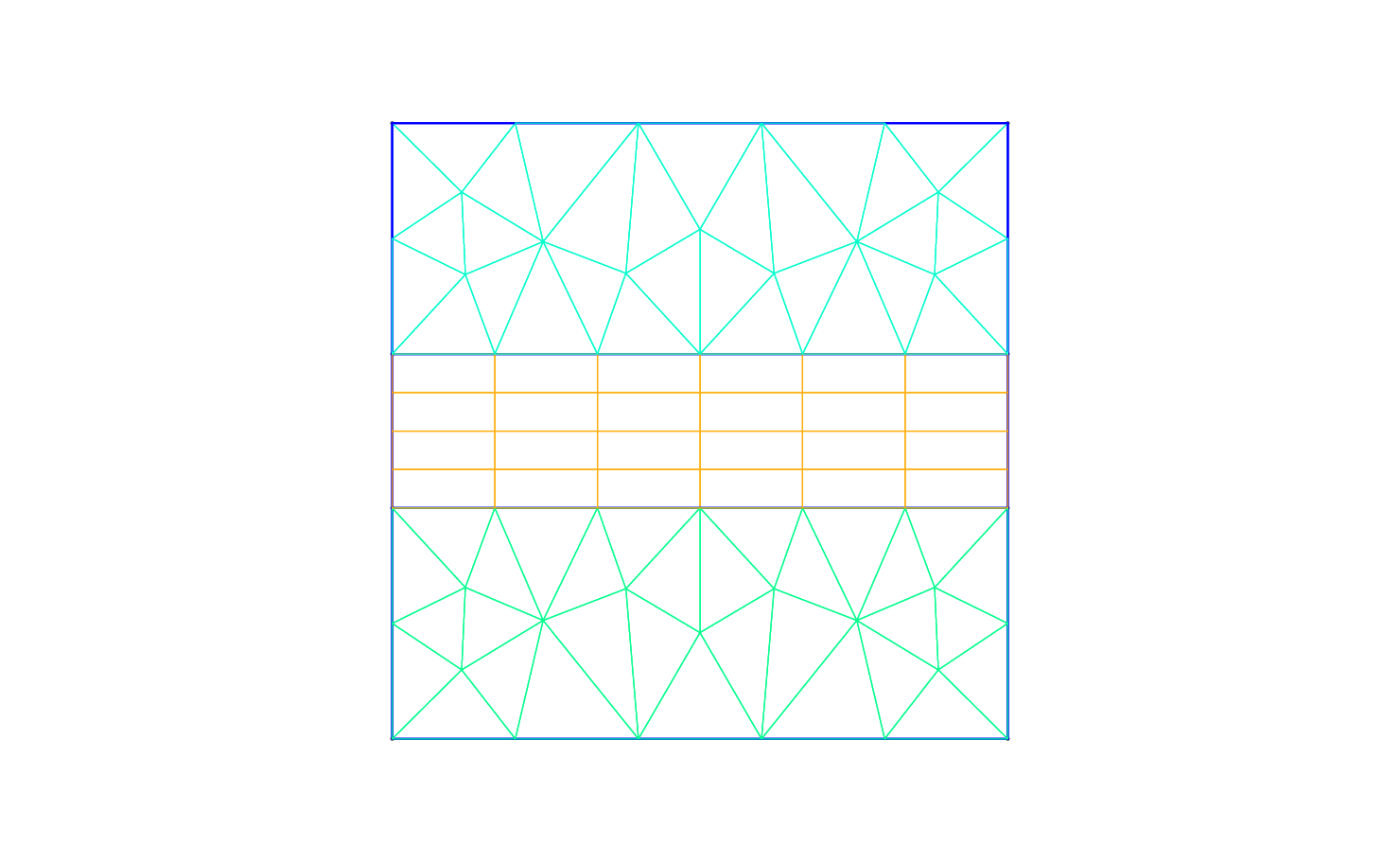
order 2 for a second order element (-order int: set mesh order(1. With this code: Mesh.Algorithm 9 // Packing for Parallelograms lc 0.1 // vertices.

The optional expression on the right hand side specifies the maximum difference (in degrees) allowed between the largest angle of a quadrangle and a right angle (a value of 0 would only accept quadrangles with right angles a value of 90 would allow degenerate quadrangles default value is 45). According to the release notes, this option appeared in GMSH at least in 4.1.1: 4.1.2 (January 21, 2019): fixed full-quad subdivision if Mesh.SecondOrderLinear is set fixed packing of parallelograms regression in 4.1.1. 78 of them match the cross field singularities (a) and the others allow the mesh size transitions (b). II offers for quadrilateral and hexahedral meshes for several versions. To create a cube we need to create 8 points, 12 edges/lines, 6 faces, and their surfaces. So first we create a cube then both pentagons. Recombine Surface | "*" Recombines the triangular meshes of the surfaces listed in expression-list into mixed triangular/quadrangular meshes. After cavity remeshing, the final quasi-structured mesh (d) contains 606/56743 irregular vertices. grid1: Loading a mesh generated by gmsh grid2: Merging triangulations. gmsh.initialize () Step2: The above mesh is made up of three shapes a cube and two pentagons. If you're using the command line, you will need first to combine triangles into rectangles by using Recombine function in the geometry file: From the command line, you can also use -order 2. For this approach to work, we need to assign the number of nodes along selected lines. An example of transfinite interpolation is the Coon’s Patch. The Q-Morph algorithm 22 transforms a given triangle mesh into a quadrilateral mesh using an advancing front method. To always generate 2nd order elements, select ‘Generate second order elements’ in the mesh option panel. The most convenient quadrilateral mesh approach in gmsh is to use transfinite interpolation. To generate second order elements, click on ‘High order’ in the mesh menu after the mesh is completed. If it's not too late you need a second order element (Check at )ĭoes Gmsh support curved elements? Yes, Gmsh can generate both 1st order and 2nd order elements. Remacle Published 8 March 2021 Computer Science ArXiv We propose an end-to-end pipeline to robustly generate high-quality quadrilateral meshes for complex CAD models. I want a mesh with Quadrangle (9 nodes instead of 8 nodes) - CFD Online Discussion Forums Quasi-structured quadrilateral meshing in Gmsh - a robust pipeline for complex CAD models M. coarsen_boundaries ( domain, ( 8e5, 4.68e6 ), domain_srs, mesh_size ) minimum ( s_coast, s_porq ) return s_dist coarse = seamsh. Distance ( domain, 20, ) def mesh_size ( x, projection ): s_coast = np.
Gmsh quadrilateral mesh generator#
Distance ( domain, 100, ) dist_porquerolles = seamsh. Get a look into open-source 3D CAD modeling (FreeCAD) and mesh generator (GMSH) for CFD simulations - along with a pictorial summary of tutorials in. add_boundary_curves_shp ( "data/data_no_duplicate.shp", "physical", CurveType. ImportFromProj4 ( "+proj=utm +ellps=WGS84 +zone=31" ) domain = seamsh.


extractall () import seamsh from seamsh.geometry import CurveType import seamsh.geometry import numpy as np from osgeo import osr domain_srs = osr. Import os import urllib.request import tarfile if not os.


 0 kommentar(er)
0 kommentar(er)
